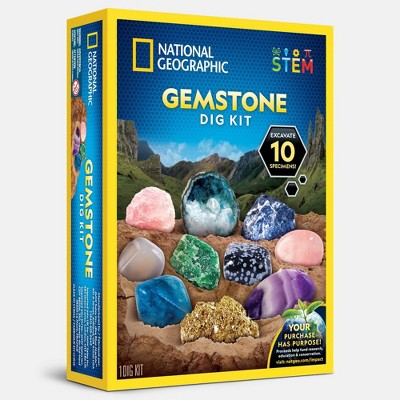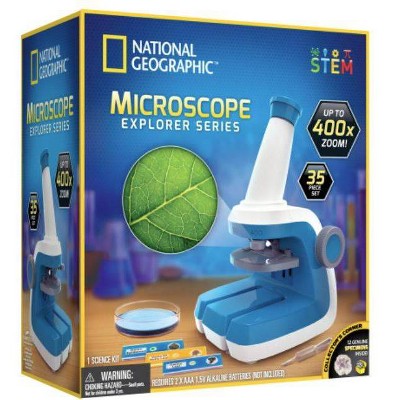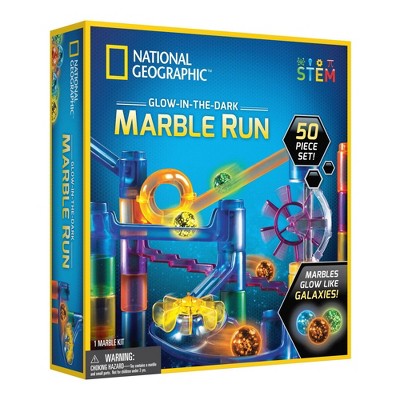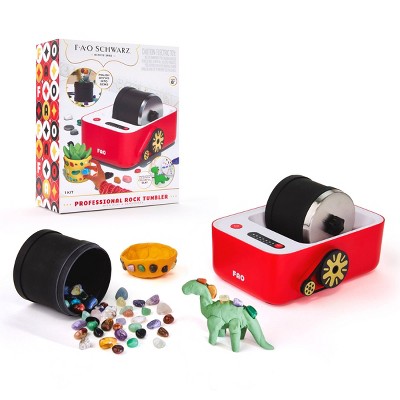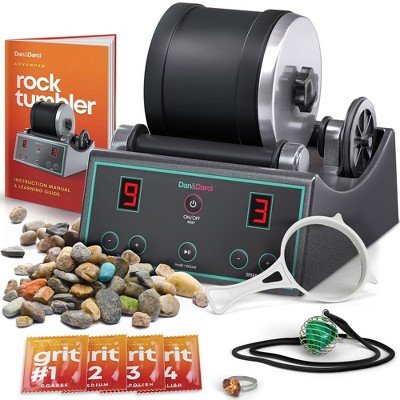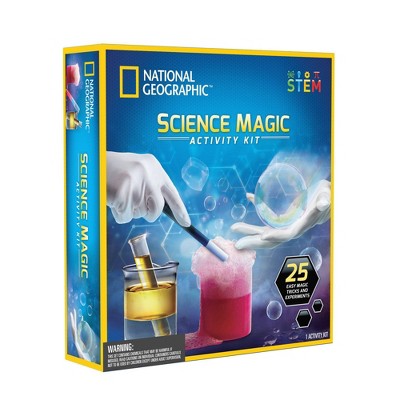National Geographic Rock Tumbler Deluxe Series: Geology Kit for Grades 2-10 with Activity Guide



About this item
Highlights
- A complete rock tumbling kit with a tumbler, rough rocks, polishing grit, jewelry fastenings, instructions, and a learning guide.
- This kit includes 12 varieties of premium gemstones.
- A fun and easy way for kids or new rock-tumbling enthusiasts to start a hobby that can last a lifetime.
- Detailed learning guide teaches about natural rock polishing processes and more.
Description
Shipping details
Return details
Q: I bought the rock tumbler and no matter how many rocks I put in the tumbler itself, The wheel underneath the barrel just keep spinning and the metal barrel with the rocks in it stay still how do I fix it? It should work on the first try…
A: Thank you for your question. We’re so sorry to hear that your tumbler arrived defective—this is certainly not the experience we want for our customers. For the fastest resolution, we recommend reaching out to the manufacturer directly. Their contact information can be found on the box and on the back of the user manual. They’ll be happy to help make things right!
submitted byNational Geographic - 2 months agoBrand expert
Q: Grit 1 missing in our kit. Will it work with grits?
A: Thank you for your question. I’m sorry to hear your kit was missing the “Step 1” grit. This four-stage silicon carbide grit for rock tumbling systems is the ideal way to give rough rocks a smooth, polished look. The first rock polishing stage smooths rough edges and provides initial shaping. The second stage smooths the rock surfaces even more. The third stage provides a strong pre-polish, followed by the fourth stage which completes the grit polishing process. Because each step is designed to polish the rocks in a different way, we would be happy to send you a “Step 1” grit to maximize your rock tumbling experience.
submitted byNational Geographic - 2 months agoBrand expert
Q: Does this contain raw tiger's eye? Wouldn't the act of tumbling release the crocidolite/aabestos from the quartz?
A: Thank you for your question! Tumbled Tiger’s Eye does not contain raw, fibrous crocidolite. During the natural formation process, the crocidolite (a type of asbestos) is replaced by quartz through a mineral transformation called pseudomorphism, which stabilizes the material. Once fully replaced by quartz, the fibers are encapsulated, making the stone safe to handle and tumble. When tumbling Tiger’s Eye in a rock tumbler, the process smooths the surface but does not release airborne asbestos because the mineral structure has already changed. However, as with all lapidary work, it’s always a good practice to wet sand or polish to minimize dust and work in a well-ventilated area. Let us know if you have any other questions!
submitted byNational Geographic - 7 months agoBrand expert
Q: What is ths maximum rock size you can do in the tumbler?
A: Thank you for your question. In a 1-pound rock tumbler barrel, the recommended maximum rock size is about ½ inch to 1.5 inches in diameter. For the best tumbling results, it's ideal to have a mix of small and medium-sized rocks, ensuring there’s enough space for movement and grit circulation. A single larger rock (around 2-3 inch) may fit, but it could limit the effectiveness of the tumbling process. Always aim for a well-balanced load to achieve smooth, polished results!
submitted byNational Geographic - 8 months agoBrand expert
Q: Is the N.G. Rock Tumbler Deluxe Series loud or very noisy?
A: Thank you for your question. The National Geographic rock tumbler (when running) is ~75 decibels.
submitted byNational Geographic - 9 months agoBrand expert
Q: Is the barrel rubberized? Or plastic?
A: Thank you for your question. The exterior of the barrel is a hard plastic while the inside of the barrel is rubberized.
submitted byNational Geographic - 10 months agoBrand expert
Q: Can you also use this to reate "sea glass"?
A: Thank you for your question. Yes, you can use our rock tumbler to tumble glass, though there are a few considerations to keep in mind: 1. Type of Glass: Sea glass, broken bottle glass, or any glass items you want to polish can work well in a rock tumbler. Softer, thin glass may break, so thicker pieces are better. 2. Cycle Time: Tumbling glass can take less time than tumbling rocks. Often, two to four days per grit stage is sufficient, though this depends on the desired finish. 3. Sharp glass: Glass with sharp edges can cut the barrel, so choose pieces that are not jagged
submitted byNational Geographic - 11 months agoBrand expert
